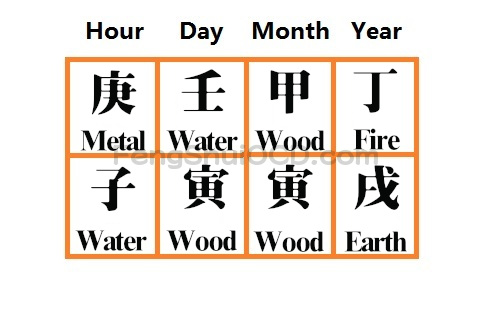In reading into a set of bazi, one of the most important factors to take account of is the strength of the day master.
The concept of the day master’s strength in Chinese astrology refers to the unique characteristics and qualities associated with an individual’s Day Master. It is determined based on a person’s date of birth and plays a crucial role in analyzing one’s personality, strengths, weaknesses, and overall destiny. The Day Master signifies the self-element in a Bazi chart, representing the person’s core identity and innate nature.
Whether one is a strong daymaster or weak daymaster, it indirectly influences how an individual interacts with the world, makes decisions, and navigates through life. With this information, it can be used as knowledge and wisdom, enabling people to leverage their potential and make informed choices that align with their natural inclinations.
This insight allows individuals to optimize their strengths, overcome challenges, and achieve personal growth and success in various aspects of life.
Firstly, the daymaster (日主), or sometimes known as the self-element, is the heavenly stem of the day pillar in bazi.
Because there are many bazi masters who uses different techniques and methods to assess the strength of the self element, there is no one method that is truly right or wrong.
But we can use a mathematical approach to determining the strength of the day master.
Excluding the daymaster from the bazi, there are 7 other characters within. With the different weightage of influence that each character has on the day master, we can assign points to each character. This will enable us to judge a daymaster’s strength based on a points system.
The weightage take into consideration various factors like the season, stage and distance from daymaster, etc.

As seen above, the points are assigned as follows:
- 3 for hour stem
- 3 for hour branch
- 3 for day branch
- 3 for month stem
- 10 for month branch
- 2 for year stem
- 1 for year branch
When we sum up all the points, we get 25.
To work with these numbers, refer to the element that the day master is. Then by referring each of the other 7 characters, the number assigned to the position will be either added or subtracted based on the element being a supportive or exhaustive one with regards to the day master.
This supportive and exhaustive relationship will be based on the interactive relationship between the 5 elements.
See this table
| Element | Supportive | Exhaustive |
| Water | Water, Metal | Wood, Fire, Earth |
| Wood | Wood, Water | Fire, Earth, Metal |
| Fire | Fire, Wood | Earth, Metal, Water |
| Earth | Earth, Fire | Metal, Water, Wood |
| Metal | Metal, Earth | Water, Wood, Fire |
When there is a supportive element, we add the points associated to the position. If the final sum is less than 13, then it would be a weak day master. If it is 13 or more, it would be a strong day master.
For example, below is a random bazi with the Ren daymaster of water element.

In this example, the only supportive elements are the characters in the hour pillar. So the sum of points will be 6. This is less than 13. So it will be a weak day master.
If for instance the month branch is of water element instead of wood, then the sum will become 16. Thus, becoming a strong daymaster.
It can be seen that the month branch carries the most weight in terms of determining the strength of the self-element. And the year branch carries the least weight.



